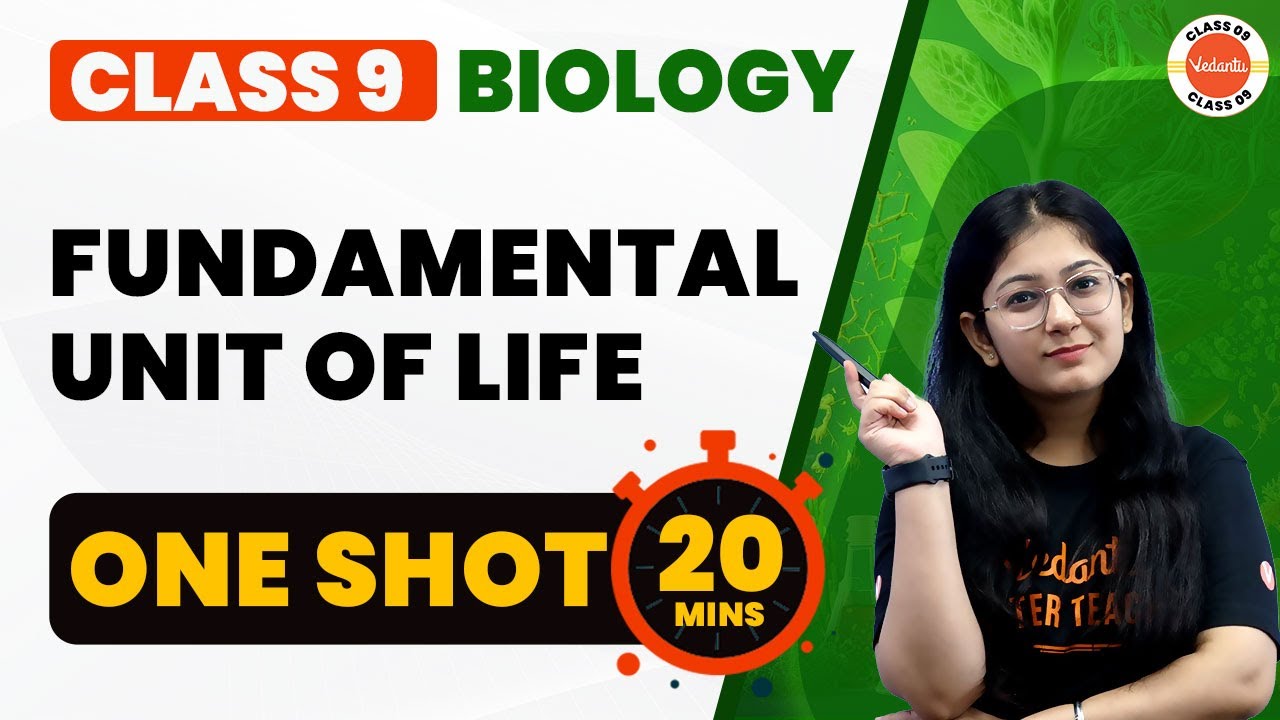BAB 1 PENGENALAN SEL || Sel Hewan dan Sel Tumbuhan || IPA Kelas 8 Kurikulum Merdeka
Summary
TLDRThis educational video script introduces the basic concepts of cellular biology, focusing on the differences between animal and plant cells. It explains the structure of cells, including the cell membrane, cytoplasm, and nucleus, and highlights unique organelles like the cell wall in plants and mitochondria in both. The script also touches on the unique characteristics of animal cells, such as their smaller size due to the absence of a cell wall and their ability to regenerate and self-destruct when damaged. The video concludes with a brief quiz to reinforce the learned concepts.
Takeaways
- 🔬 Cells are the smallest units of living organisms and consist of smaller parts known as organelles, each with specific functions.
- 🔬 The structure of a cell is divided into three main parts: the nucleus, cytoplasm, and cell membrane.
- 🔬 The cell membrane functions to control the inflow and outflow of substances needed by the cell, such as food particles, water, oxygen, and metabolic waste.
- 🌿 The cell wall is an outer part of plant cells that protects the cell and is rigid, preventing plants from moving freely like animals.
- 🧠 The nucleus, or the 'brain' of the cell, is present in both plant and animal cells and regulates all cellular activities.
- 🏋️ Mitochondria are the 'powerhouses' of the cell, found in both animal and plant cells, producing energy through cellular respiration.
- 💧 The vacuole stores water, food, and metabolic waste, and is larger in plant cells, serving to store the results of photosynthesis.
- 🌱 Chloroplasts, organelles unique to plant cells, contain the green pigment chlorophyll and are involved in photosynthesis to produce glucose.
- 🧪 Cytoplasm is a jelly-like substance that fills the space within the cell and is the site of various chemical reactions.
- 🔍 Animal cells are smaller than plant cells due to the absence of a cell wall, allowing for more cells to be produced and replaced daily.
- 🛡 Animal cells have the unique ability to repair themselves quickly and can self-destruct if damaged to prevent harm to other cells.
Q & A
What is the basic unit of life according to the script?
-The basic unit of life is the cell, which consists of various smaller parts called organelles.
What is the function of the cell membrane?
-The cell membrane functions to control the inflow and outflow of substances needed by the cell, such as food particles, water, oxygen, and waste products of metabolism.
How does the cell wall differ between plant and animal cells?
-The cell wall is only present in plant cells and some single-celled organisms. It serves to protect the plant cell and is rigid, preventing the plant from moving freely like animals.
What is the role of the nucleus in a cell?
-The nucleus acts like the brain of the cell, organizing all cellular activities. It is present in both plant and animal cells.
What is the primary function of mitochondria in a cell?
-Mitochondria are the parts of the cell that produce energy through the process of cellular respiration, similar to how a power company distributes electricity to homes.
What is the role of the vacuole in a cell?
-The vacuole stores water, food, and waste products of metabolism. In plant cells, the vacuole is much larger than in animal cells and serves to store the results of photosynthesis.
What is the significance of chloroplasts in plant cells?
-Chloroplasts contain the green pigment chlorophyll and play a role in photosynthesis, which produces food in the form of glucose for the plant.
What is cytoplasm and what is its function?
-Cytoplasm is the jelly-like substance within the cell that fills the spaces between cell parts and is the site of chemical reactions within the cell.
Why are animal cells generally smaller than plant cells?
-Animal cells are generally smaller than plant cells because they lack a cell wall, allowing for a more compact structure.
How do animal cells regenerate and repair themselves?
-Animal cells have the potential to quickly repair themselves and function immediately. If they fail to do so, they will destroy the damaged cells to prevent impact on other cells.
What is the unique characteristic of animal cells mentioned in the script?
-The unique characteristic of animal cells mentioned is that they do not have a cell wall, which contributes to their smaller size compared to plant cells.
Outlines

此内容仅限付费用户访问。 请升级后访问。
立即升级Mindmap

此内容仅限付费用户访问。 请升级后访问。
立即升级Keywords

此内容仅限付费用户访问。 请升级后访问。
立即升级Highlights

此内容仅限付费用户访问。 请升级后访问。
立即升级Transcripts

此内容仅限付费用户访问。 请升级后访问。
立即升级浏览更多相关视频

Grade 10 - Cell Theory and Cell Parts and Function

Fundamental Unit of Life One Shot in 20 Mins | NCERT Class 9th Science Chapter-5 | Vedantu Class 9

Sel (Struktur dan fungsi sel) - Biologi kelas 11 SMA

Cells (Parts and Functions), Plant and Animal Cell | Grade 7 Science DepEd MELC Quarter 2 Module 4

Struktur Sel (Biologi Sel dan Molekuler)

Kurikulum Merdeka Rangkuman IPA Kelas 8 Bab 1: Pengenalan Sel
5.0 / 5 (0 votes)
